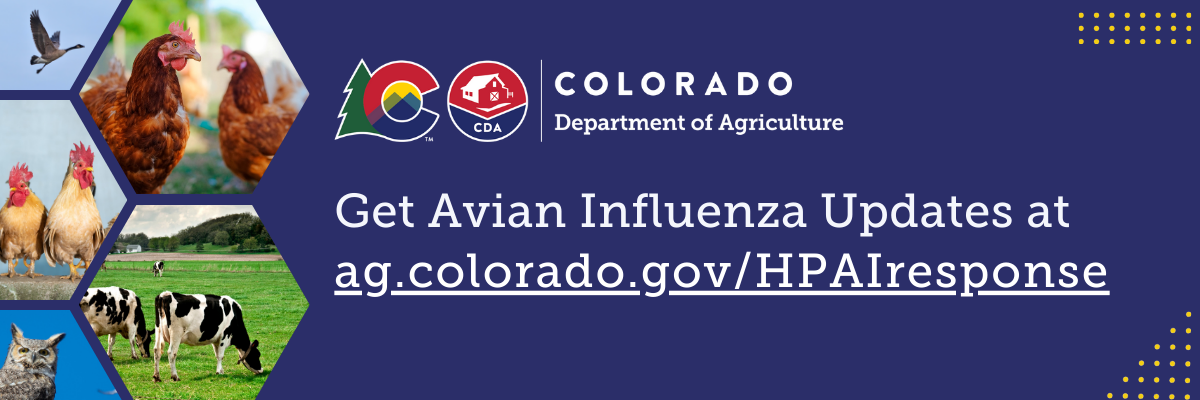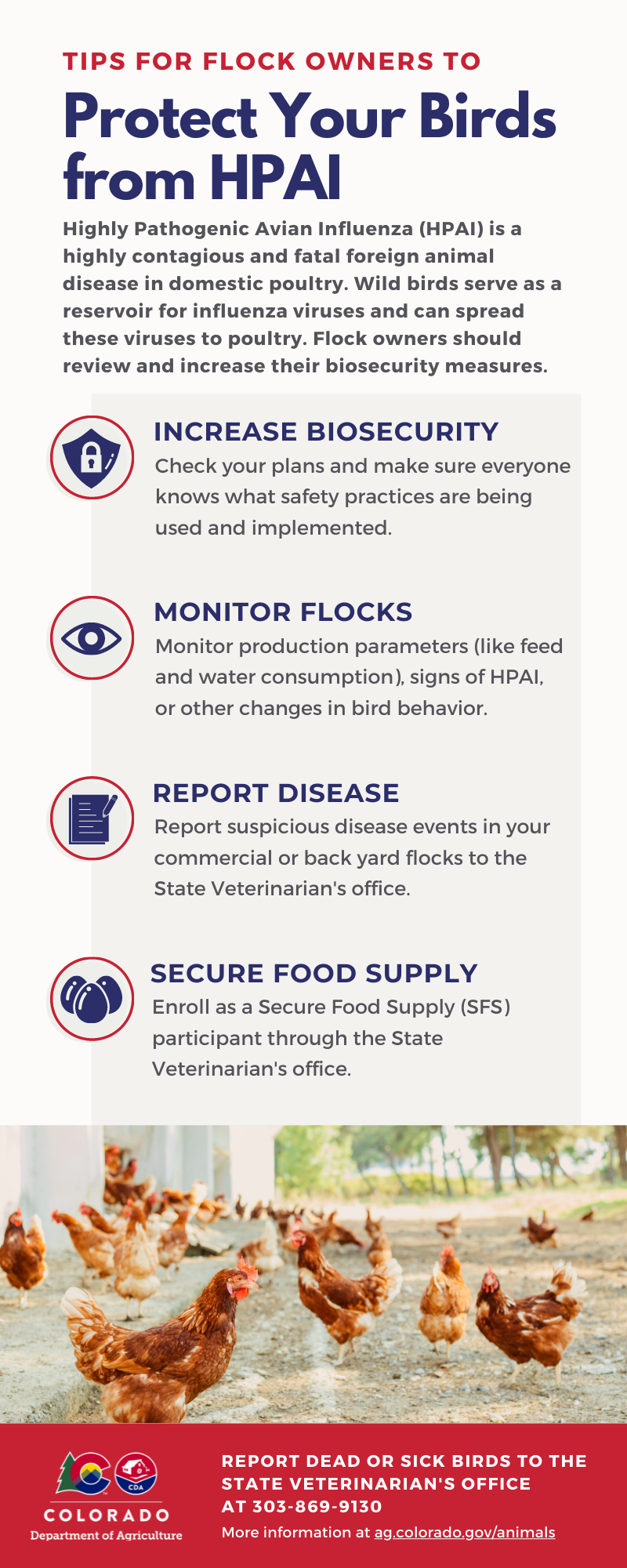HPAI in Poultry
In February 2022, Highly Pathogenic Avian Influenza was detected in wild birds and poultry in the United States. In Colorado, CDA leads the response to the virus, in collaboration with federal, state, and local partners.
For more information of the nationwide detections of HPAI in poultry, wild birds, mammals and other animals, please visit the USDA/APHIS website.

Situation Reports
To update the public on the status of HPAI, CDA releases updates via Situation Reports, which are posted on Fridays with and include information from the preceding week.
Most current Situation Report
What Flock Owners Should Do
Please visit USDA’s Defend the Flock Program to for in depth information about which biosecurity practices can keep your birds safe.
Owners should take the following steps to prepare:
INCREASE BIOSECURITY: It is extremely important for poultry owners to increase biosecurity measures to protect their birds from HPAI. The USDA Defend the Flock website(opens in new window)(opens in new window)(opens in new window) has helpful resources for keeping poultry healthy in any operation. Commercial poultry producers can use this toolkit to assess their biosecurity practices and preparedness.
Learn more about biosecurity
MONITOR FLOCKS: Monitor your flock for clinical signs of HPAI, including monitoring production parameters (feed and water consumption, egg production) and increased morbidity and mortality. Any changes in production parameters that could indicate HPAI should be reported.
SECURE FOOD SUPPLY: We also strongly encourage poultry producers to enroll as a Secure Food Supply (SFS) participant through our office. The most important component of ensuring your continuity of business in the face of a HPAI outbreak is to enroll in SFS and have a biosecurity plan in place. If you would like more information on SFS, please reach out to becky.hoffman@state.co.us or (303) 870-5494.
REPORT DISEASE: Veterinarians, producers, and hobby poultry owners should report any suspicious disease events in poultry flocks to the State Veterinarian’s office at 303-869-9130 or using an online form. If it is after hours, the voicemail message will indicate which veterinarian is on call.
Report sick or dead domestic birds

Struggling with stress around avian influenza?
Bird owners struggling with stress or anxiety around HPAI can contact Colorado Crisis Services by calling 1-844-494-TALK (8255) or texting TALK to 38255. Farmers and ranchers can receive a voucher for six free sessions with an ag-competent provider through the Colorado Agricultural Addiction and Mental Health Program (campforhealth.org).
